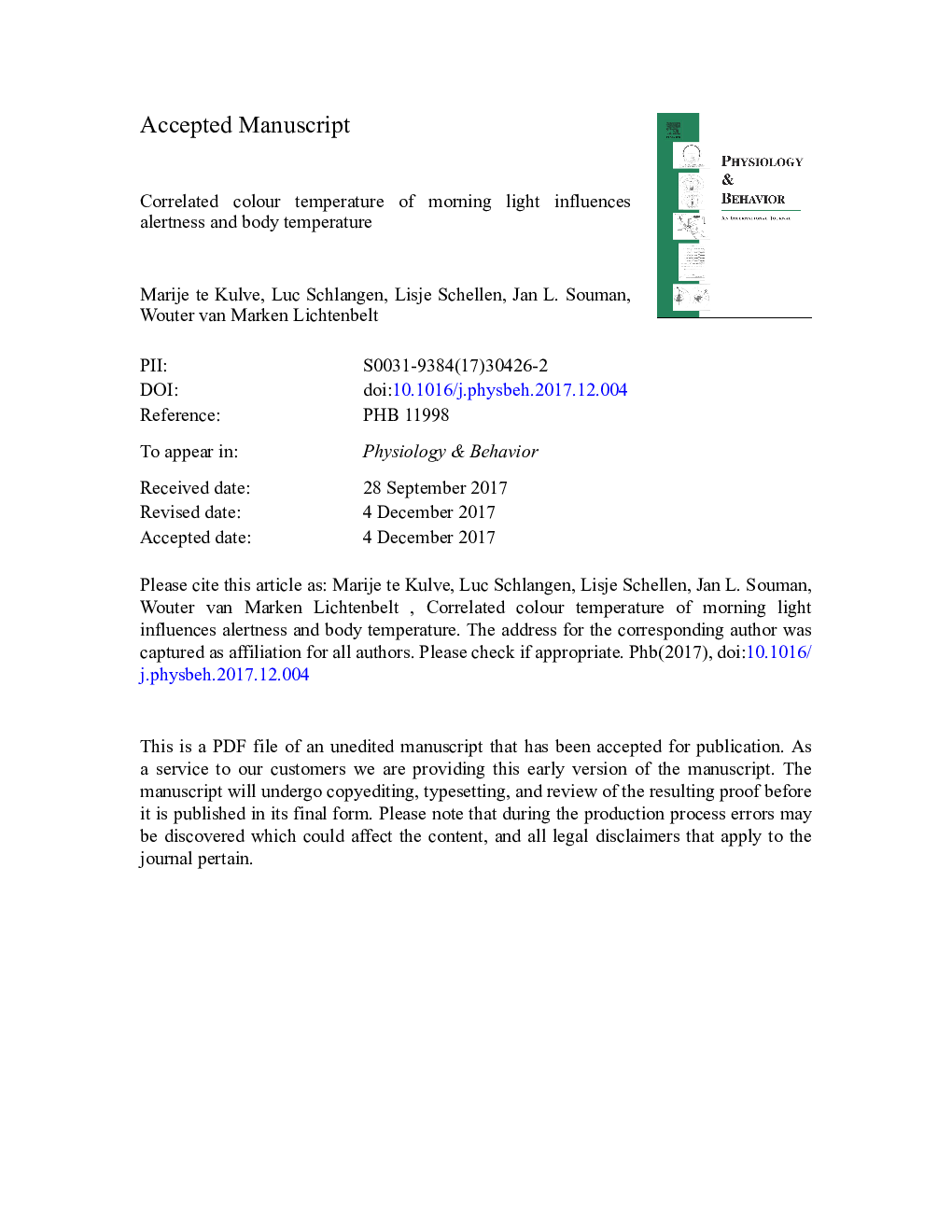| Article ID | Journal | Published Year | Pages | File Type |
|---|---|---|---|---|
| 8650647 | Physiology & Behavior | 2018 | 24 Pages |
Abstract
Though several studies have reported human alertness to be affected by the intensity and spectral composition of ambient light, the mechanism behind this effect is still largely unclear, especially for daytime exposure. Alerting effects of nocturnal light exposure are correlated with melatonin suppression, but melatonin levels are generally low during the day. The aim of this study was to explore the alerting effect of light in the morning for different correlated colour temperature (CCT) values, as well as its interaction with ambient temperature. Body temperature and perceived comfort were included in the study as possible mediating factors. In a randomized crossover design, 16 healthy females participated in two sessions, once under 2700Â K and once under 6500Â K light (both 55Â lx). Each session consisted of a baseline, a cool, a neutral and a warm thermal environment. Alertness as measured in a reaction time task was lower for the 6500Â K exposure, while subjective sleepiness was not affected by CCT. Also, core body temperature was higher under 6500Â K. Skin temperature parameters and perceived comfort were positively correlated with subjective sleepiness. Reaction time correlated with heat loss, but this association did not explain why the reaction time was improved for 2700Â K.
Related Topics
Life Sciences
Biochemistry, Genetics and Molecular Biology
Physiology
Authors
Marije te Kulve, Luc Schlangen, Lisje Schellen, Jan L. Souman, Wouter van Marken Lichtenbelt,
